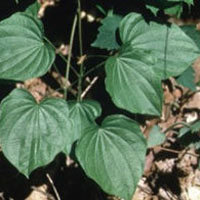Search Healthnotes
Wild Yam
 © Steven Foster
© Steven FosterHow It Works
The steroidal saponins (such as diosgenin) account for some of the activity of wild yam. Another compound, dioscoretine, has been shown in animal studies to lower blood sugar levels.2 An extract of wild yam was also found in a clinical trial to have antioxidant properties and raised HDL, the “good,”cholesterol in elderly adults.3
Contrary to popular claims, wild yam roots do not contain and are not converted into progesterone or dehydroepiandrosterone (DHEA) in the body.4, 5 Pharmaceutical progesterone is made from wild yam using a chemical conversion process. This can lead to confusion—while wild yam can be a source of progesterone, it cannot be used without this pharmaceutical conversion, which cannot be duplicated by the body. Women who require progesterone should consult with their physician and not rely on wild yam supplements.
How to Use It
Up to 2–3 ml of wild yam tincture can be taken three to four times per day. Alternatively, 1 gram of dried, powdered root can be taken three times each day.6
Copyright © 2024 TraceGains, Inc. All rights reserved.
Learn more about TraceGains, the company.
The information presented by TraceGains is for informational purposes only. It is based on scientific studies (human, animal, or in vitro), clinical experience, or traditional usage as cited in each article. The results reported may not necessarily occur in all individuals. Self-treatment is not recommended for life-threatening conditions that require medical treatment under a doctor's care. For many of the conditions discussed, treatment with prescription or over the counter medication is also available. Consult your doctor, practitioner, and/or pharmacist for any health problem and before using any supplements or before making any changes in prescribed medications. Information expires December 2024.











